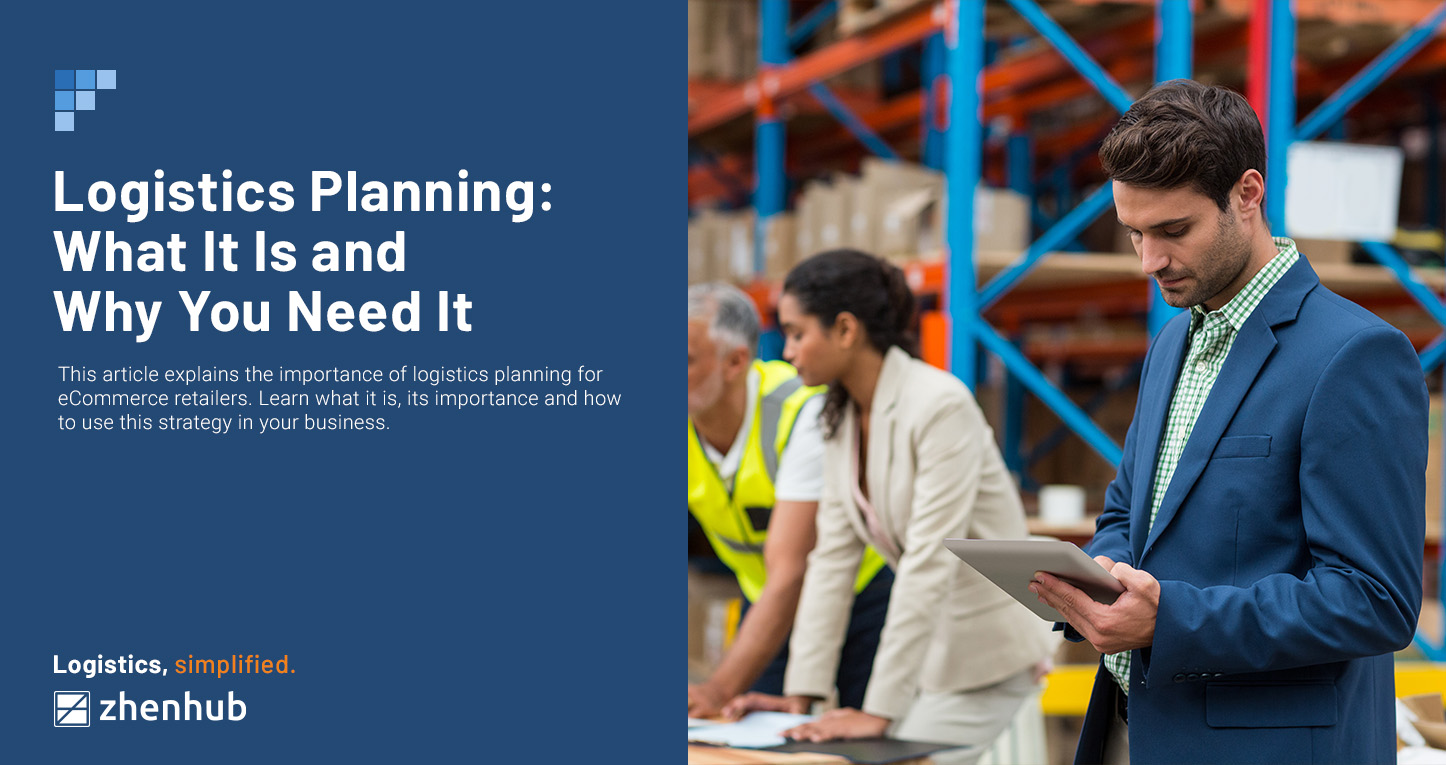
Is Robotics in Logistics the Future?
Time to read: 6 minutes
Choose your item, put it in your cart, pay, and watch for your package to arrive. For customers, the online shopping process should be simple and easy. But since the eCommerce boom, the logistical challenge of delivering things to a home or business has become even more intricate behind the scenes. For many online merchants, one of the most pressing concerns has been productivity and efficiency without sacrificing service quality. The solution is to take several processes and responsibilities out of the hands of humans and into intelligent machines. And now, even more intriguingly, robots can process and deliver it.
The rise of robotics in logistics shows that the sector is undergoing unprecedented growth and change.
More eCommerce companies are searching for solutions that simplify procedures. Even with streamlined processes, they must still deliver the best possible customer service in a more demanding market. It’s characterized by extraordinarily short lead times. Businesses that use supply chain automation can streamline processes and expedite order fulfillment.
Using robotics in logistics means using automated solutions for your supply chain’s operations. The main goal is to improve product safety, boost inventory flows, and optimize warehouse efficiency.
Robotics has a lot to offer in logistics. Automatic handling equipment allows for dependable, precise, efficient, and adaptable operations. The most recent tech developments have encouraged the creation of new robotic applications in more logistical operations.
Five Benefits of Using Robotics in Logistics
A logistics robot can be any autonomous device or system used to optimize safety, automate product flows, and increase efficiency in warehouse operations.
These robots are becoming increasingly common as new technologies are implemented in warehouse activity. They are used in product receiving, storage, stock management, order processing, and shipping. These autonomous solutions can handle order preparation, product rack storage, and product transfers between locations.
More companies should seriously consider integrating robots into their logistics to reduce errors and increase efficiency. According to a McKinsey report, automation has reached a tipping point for omnichannel warehouses. This indicates that the market for warehouse automation will grow at a pace of 23% annually and surpass $51 billion by 2030.
Automation uses cutting-edge technology to do jobs with the least human involvement. Automation in warehousing refers to various technological advancements, such as automated storage and retrieval systems (AS/RS), robotic systems, and conveyor belts.
1. Greater Efficiency and Accuracy
Significant efficiency and accuracy improvements are two of the main advantages of automation in warehousing. Picking, packaging, and sorting are repetitive, time-consuming jobs prone to errors. Robots and automated systems can complete them with unmatched accuracy and speed. It decreases order fulfillment delays and lowers the possibility of mistakes.
Important Warehouse Automation Statistics – Meteor Space
2. Optimized use of Warehouse Space
AS/RS systems can maximize your total warehouse space utilization. These systems effectively use vertical space, enabling high-density product retrieval and storage. It’s particularly advantageous for warehouses that operate in constrained urban settings.
3. Potential for Non-stop Operations
Warehouses can run continuously around the clock because of automation and robots. Human staff will eventually need to take a rest. This ongoing process results in quicker order processing and delivery times. Thus, it satisfies the needs of today’s competitive eCommerce market.
4. Scalability and Flexibility
Automated systems are easily scalable to meet demand variations. Warehouses can easily adjust to changes in order volumes by adding more robots or modules to the system as demands fluctuate.
5. Workplace Safety
Robotics in logistics lowers the possibility of accidents and injuries at work. Robots can perform physically taxing and even possibly dangerous responsibilities. Reducing labor-intensive duties guarantees a safer workplace and improves the workforce’s well-being.
Potential Use Cases of Robotics for Logistics
High-performance robots in logistics work in conjunction with intelligent control systems. These automated machines use 3D vision, machine learning, and artificial intelligence to perform complex tasks. Robots will only grow in popularity as eCommerce sales of consumer items continue to soar.
These systems will provide manufacturing facilities with the speed and dependability they need. Furthermore, using these incredibly versatile robotic technologies, direct-to-consumer shops, general merchandise merchants, third-party logistics (3PL) suppliers, and more can see measurable improvements.
Item Receiving and Dispatch
Logistics robots, such as automatic truck loading and unloading systems, can perform product receiving and dispatch activities. These systems also allow pallets to be inserted and removed from vehicles autonomously and with little operator assistance. Product receiving and dispatch (primary warehouse operations with large daily movement rates) can also be accelerated using automatic conveyors for boxes and pallets.
Storage
Stacker cranes are known for their ability and dexterity while storing and removing goods from the racks. These robots are used for both pallets and boxes (mini-loads). Single-mast, twin-mast, and AS/RS trilateral stacker cranes are some of the stacker cranes types. These logistics robots automatically insert and remove pallets from racks. They are designed to move vertically and horizontally through the storage lanes.
The automatic pallet shuttle is another popular automated option for businesses with many items going in and out. Pallet loading and unloading are accelerated by an electric shuttle that slides through the storage channels of this small storage system.
Order Picking
AS/RS best shows the potential of logistics robots in order preparation for boxes. A conveyor and a stacker crane for boxes can be part of a single storage system. In this setup, workers stay at their pick stations and prepare orders using the goods-to-person technique. Industrial robotic arms can be utilized as an alternative for picking assistance. These arms are designed to execute pick-and-place operations. They can transfer items from one area to another and arrange them in a different location.
Internal Warehouse Movement
Logistics robots, such as box and pallet conveyor systems, are among the most efficient ways to facilitate the flow of warehouse items. These systems enable the construction of various configurations to link the different zones within your fulfillment facility. Electrified monorails are transport systems that connect multiple locations within a warehouse. An electric motor propels these automated trolleys and travels over an electrified track attached to the warehouse floor or hung from the ceiling.
Finally, businesses can use autonomous mobile robots (AMRs) or automated guided vehicles (AGVs) to move cargo between work zones.
Transportation and Delivery
Recently, the logistics industry has seen increased usage of drones. They can ship and deliver customer purchases via air because of their advanced technology. This new (currently undergoing testing) approach can lower prices. It can facilitate faster order delivery (compared to traditional truck distribution) and do less highway traffic, thus significantly decreasing pollution. This service would be convenient for customers and retailers in urbanized and crowded cities.
Drones also have much potential for distant rural locations. They can fly over difficult terrain and reach communities with poor road infrastructure.
Autonomous robotics has the potential to improve operations. It’ll provide new opportunities to increase productivity, decrease risk, decrease cost, and enhance data collection. Customer expectations and the volume of packages, shipments, and orders have grown, which can be unmanageable for conventional methods. Advancements can still be made at every stage of the supply chain. Online merchants must continuously look for new strategies to stay ahead of the curve. Many innovative ideas are being tested and put into practice right now to enhance logistics sector operations.
There may be a concern that robots may replace humans in the workplace due to all this technological advancement, but that shouldn’t be the case. Although humans and robots can now collaborate well, it can still be improved. Rather than being afraid of robots replacing us in the workplace, we should welcome the benefits of robotic systems.
Robotics in logistics has a greater chance of enhancing the sector and adding more jobs. Robots can do some tasks without having to replace their human counterparts. Automation and robotics will also require supervision and constant maintenance. You’ll still need someone to analyze and interpret the data these robots gather. Both newcomers to the field of logistics and seasoned professionals can acquire new skills with this new setup. All these advancements will enhance their working environment with the proper training.
Logistics robots have been introduced into production centers and warehouses to assist humans in performing complex tasks. Today, it’s easier to achieve faster order processing, storing and removing large loads, and moving items. Their goal is to maximize productivity and efficiency in these environments.
The advent of technologies like machine learning, the industrial Internet of Things (IoT), and big data has made these automated solutions increasingly popular. These solutions increase the throughput of warehouse logistics robots and reduce errors associated with manual work.
ZhenHub offers logistics software solutions that support robotics in logistics. Get international reach with our global warehousing partners. Control your inventory from anywhere with our all-in-one dashboard. Sign up online for free to get instant access. Want to learn more about how robots can benefit your warehouse? Don’t hesitate to ask when you contact us and our team of fulfillment experts.



